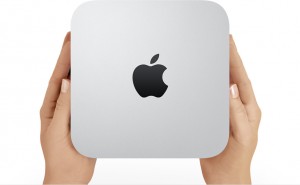Hardware choices
by Paul McGowan
If you had a chance to read yesterday's post showing the picture of the new music server we are building, you may have noticed an inconsistency in the description I posted: all the wires. My lovely wife Terri was first to point it out, followed by a blast of mails from the community. If you haven't seen the photo, head to our Instagram photo page to view it. I erroneously stated there would be "no wires" needed.
Two things I should make clear: the wires are what you'd have when you're building the server, not operating it. Secondly, for those of you that are sticklers for details, our DIY server will use the Trivial File Transfer Protocol and have two cables: a power cord and a USB cable. Sorry. :)
Continuing our story of building a music server, I laid out the requirements and expectations in yesterday's post. Today let's cover hardware choices.
With the goal of a small, quiet, affordable, lightweight box without a keyboard, mouse or screen, the choices available to us narrow down quickly. Many of you suggested a laptop. I nixed this choice immediately because of size. Even a small 13" laptop is huge, relative to what we have in mind for our project, and doubles in size when you open it up exposing the screen and keyboard. Besides, it looks like a computer. I don't want a computer, I want a dedicated music server.
Next comes the choice of platforms. This one's obvious to me. Apple. Why? Well, if we ignore my dislike for Windows and Windows based machines and focus back on our design goals that include ease of use and setup, that really narrows the choice down. Say what you will about Apple products, they are dead easy to setup and use. In fact, they are so easy, many Windows users don't like them because of their simplicity. Tough crowd.
The Mac Mini is an easy choice. Retailing for $599 with a 500Gb storage drive inside, this little baby is all you need. Measuring a mere 1.4" tall and 7" wide and deep, this little faceless unit weighs in at 2.7 lbs, is machined from a solid billet of aluminum and is about as elegant a "computer" as you can get. It does have a fan inside but you'd never know it. Here's a picture of this little jewel. It doesn't even look like a computer.
To set this product up you will need an old monitor, USB keyboard and mouse (any brand will do). The monitor needs a DVI input (or HDMI) which most in the last 5-years have. If you don't have a monitor, you can buy one cheap from Amazon: here's one for $39 used. Apple makes different adapters if yours is ancient enough to not have DVI, check with the guys at the Apple store if you have questions. Remember, you're only going to need these for setup and perhaps those times when you want to load a big library, but never in use as a music server.
You'll need internet access to setup the computer and perhaps 15 minutes. Apples are brainless to setup, just follow the instructions that appear on the screen and you're done. Don't setup anything other than the basic computer.
For my setup I also purchased Apple's Super Drivebecause it looks cool, matches the mini and works great. You can use any USB DVD/CD ROM drive you wish. For me, staying cool and matching's important, so I spent the $80 to get the rig I showed in the picture yesterday. All in I spent $734.30 with Boulder city tax of 8%.
Tomorrow, lets' talk a bit more about hardware and software.
- Choosing a selection results in a full page refresh.
- Opens in a new window.









